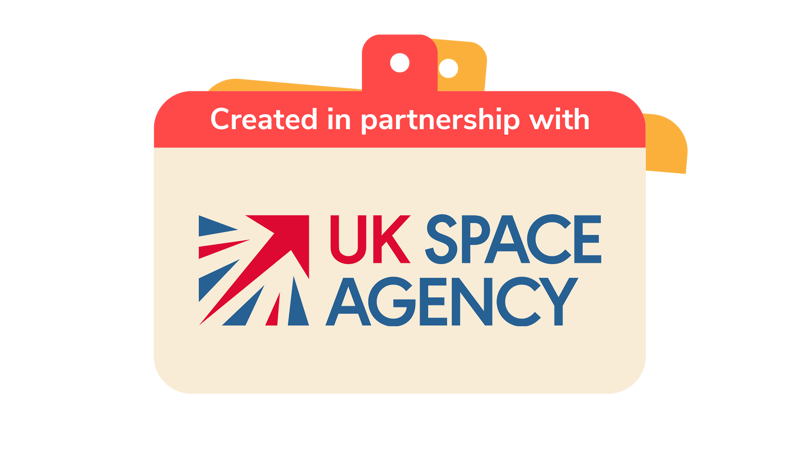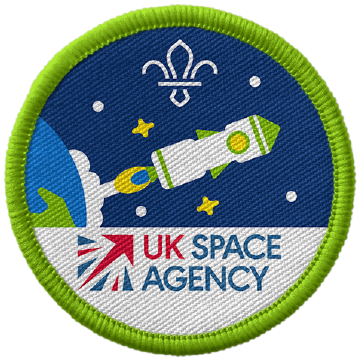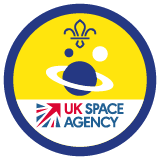
Make planets from nature
You’ll need
- Natural materials (such as twigs, leaves, moss or grass)
- Blue paper (optional)
- Pictures of Earth (optional)
- Tuff tray / play tray – a large strong plastic tray with raised sides, which is useful for messy activities (optional)
- Paper (optional)
- Colouring pens/pencils (optional)
Before you begin
- Use the safety checklist to help you plan and risk assess your activity. There's additional guidance to carry out your risk assessment, including examples. Don’t forget to make sure all young people and adults involved in the activity know how to take part safely.
- Make sure you’ll have enough adult helpers. You may need some parents and carers to help if you’re short on helpers.
Planning this activity
- Choose an appropriate, accessible outdoor area, such as outside your meeting place, a nature reserve, woodland area or park.
- Remember to find out where the nearest toilets or hand washing facilities are and plan for how people will use them, always following the Yellow Card.
- If you’re going away from your normal meeting place, make sure parents and carers know the day, the location, where you’ll be, what they need to bring, and what time to drop off and collect everyone.
- Make sure to check for any pollen allergies and hayfever.
- Check the weather forecast. Everyone should come dressed for the weather and be prepared for it to change, such as by bringing warmer clothes, a hat, gloves, waterproof coat, a drink and suncream.
- Look at the sunset times, making sure that you’ll have sufficient light throughout the activity. It’s best to run this activity on lighter evenings, such as in summer.
- Before starting, have a safety briefing. Explain the boundaries of the playing area and where the no-go zones are. Tell everyone where adults will be around the site and what people should do if anyone in their team needs help. This should include setting memorable spot where an adult will always stay. Explain the signal to stop and how long the activity will go on for. A long blast on a whistle works well as a signal to stop the activity.
- We live on a planet called Earth. Planets are very big and round objects, that travel around (or orbit) a star.
- Earth is part of a group of eight planets that travel around (or orbit) the Sun, which is our closest star. This group of planets is called the Solar System.
- There are eight planets in the Solar System. They are Mercury, Venus, Earth, Mars, Jupiter, Saturn, Uranus, and Neptune.
- Each planet’s a different colour, size, and shape. Some are hot and some are cold. The biggest planet is Jupiter, and the smallest planet is Mercury.
- Earth’s different to all the other planets in the Solar System because it's the only planet so far known to have plants, animals and people living on it.
- On our planet, Earth, there’s a special force called gravity. It keeps us on the ground and stops us floating away. The gravity on the Moon is just one-sixth of the Earth’s, so you would weigh less on the Moon. You could jump higher and carry much heavier things too!
- Mercury, Venus and Mars are rocky planets, just like the Earth. The other planets (Jupiter, Saturn, Uranus and Neptune) are made of gas, so you wouldn’t be able to sir or walk on them.
- Venus is the hottest planet. It's closer to the Sun than Earth. The coldest planet is Neptune, and Neptune is the furthest planet away from the Sun.
- From space, Earth looks a bit like a big blue marble. It’s known as the blue planet. The blue is water, such as oceans and seas. You can also see white snow and icecaps; green, yellow, brown and grey land; and the white swirls that are clouds.
Talk about Earth
- Gather everyone together in a circle in an outdoor space.
- Ask if anyone knows what a planet is and if people can name all eight planets, as well as which planet do we live on. You can find some information about planets on this page.
- You could talk about Earth and what it looks like from space. It looks very blue, which is why it’s often called the Blue Planet. You could look at a book or photos to help.
- Explain that we’re going to create our mini version of Earth using things we can find outdoors.
Collect your materials
- Make sure everyone knows the area that they can explore and understands what things they can and can’t collect. It’s always a good idea to check for dangerous rubbish, such as glass, metal or sharp objects, and be on the lookout for dog poo. If you see any, it’s best to find somewhere else to explore.
- Tell everyone to only collect natural objects that are no longer part of a living thing, such as leaves and petals that have fallen onto the ground. Remind everyone not to touch or pick up any items that aren’t nature, such as litter. You could always plan in a litter pick for another time.
- Get everyone into small groups and collect as many different natural objects as they can find. You may want to give people spotter sheets, so they know what to look for and what they can touch. You could make a visual list to help if needed.
- Make sure everyone washes their hands after touching all the items and at the end of this activity. Tell everyone to keep their fingers and hands out of and away from their hands, mouths and faces until they’ve washed their hands.
Create your pictures of Earth
- After a few minutes, come back together and show each other what you’ve found. Some people who are happy to do so could talk about what they found or saw.
- Next, show everyone how you can use the materials to create a picture of Earth. You might use sticks to create a round outline, use green leaves for the land, and use some moss for the seas and oceans. You could do this on a background of blue paper or on a plastic tuff tray/play tray if you prefer.
- When you’re ready, everyone can create your own pictures of Earth in small groups. Each group could share what they’ve created and explain why they’ve used each material.
What would your own planet look like?
- Once everyone’s made their own version of Earth, ask them to think about if they designed their own planet, what it would look like. They should think about what might live there, if anything, and what it’s made from.
- Next, everyone should create and design their own planet. They could make it using natural materials, they could use modelling clay, or they could use paper and colouring pens/pencils to draw your planet. You may want to split into groups again for this. If you’re using nature items, you may need to collect any extra materials if needed. Don’t forget to name the planet too!
- When you’re finished, anyone who wants to do so could share and talk about their planet design. They could explain why they’ve added certain things or what they’ve used to represent different bits.
Reflection
This activity was all about learning about Earth and other planets. Did you find out anything new about Earth? Can you remember what it looks like?
We all had to collect natural materials to make our planet. What was it like working in teams to collect the materials? Were there any materials or colours that you didn’t manage to find?
We also had the chance to design our own planets. What was your favourite part of creating your own planet? How is it different to Earth?
Safety
All activities must be safely managed. You must complete a thorough risk assessment and take appropriate steps to reduce risk. Use the safety checklist to help you plan and risk assess your activity. Always get approval for the activity, and have suitable supervision and an InTouch process.
- Gardening and nature
Everyone must wash their hands after the activity has finished. Wear gloves if needed. Explain how to safely use equipment and set clear boundaries so everyone knows what’s allowed.
- Outdoor activities
You must have permission to use the location. Always check the weather forecast, and inform parents and carers of any change in venue.
- Visits away from your meeting place
Complete a thorough risk assessment and include hazards, such as roads, woodland, plants, animals, and bodies of water (for example, rivers, ponds, lakes, and seas). You’ll probably need more adult helpers than usual. Your risk assessment should include how many adults you need. The young people to adult ratios are a minimum requirement. When you do your risk assessment, you might decide that you need more adults than the ratio specifies. Think about extra equipment that you may need to take with you, such as high visibility clothing, a first aid kit, water, and waterproofs. Throughout the activity, watch out for changes in the weather and do regular headcounts.
- To make it easier, adult volunteers and young leaders could help make a circular shape for young people to create the planet in.
- To make it harder, you could get people to make lots about different planets. You could encourage them to get creative and see how many of the eight planets they can create. You could share photos of Earth and the other planets for people to copy.
- Make sure the area you visit is accessible for everyone, choosing a suitable place for drop off and collection. You may need to think about avoiding steps or steep gradients or including frequent breaks.
- To make this activity easier, the natural materials could be collected before the session, and the activity can be run inside if needed.
- Some people may not want to touch natural materials, and that’s OK. They may want to give it a go wearing gloves, they could draw a picture, or they could hold onto the photo and help explain to other people where the items could be placed.
All Scout activities should be inclusive and accessible.
You could build on this session by creating nature versions of all the planets people designed. You could learn more about the planets near to us, by creating a fruit-salad solar system.
Use everyone’s ideas from the session to shape what you do next. You could learn more about Earth, find out about another planet or explore planets people designed more.

